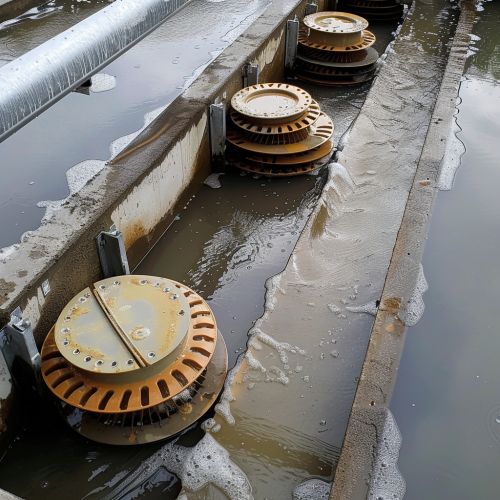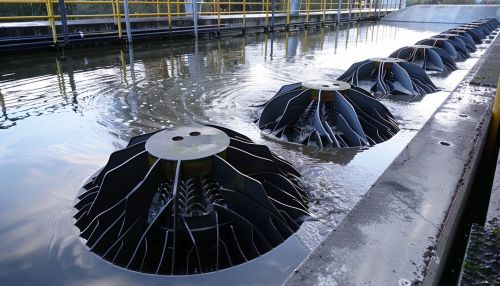Rotating biological contactor
Introduction
A RBC is a type of biological treatment process used in the treatment of wastewater following primary treatment. The primary treatment process removes the grit and other solids through a screening process followed by a period of settlement. The RBC process involves allowing the wastewater to come in contact with a biological medium in order to remove organic matter. The RBC process is considered to be a fixed film process.
Principle of Operation
The RBC process is a type of secondary treatment process, which is a biological process used for the treatment of wastewater. The wastewater is passed over a rotating media, with the media being partially submerged in the wastewater. The rotation of the media allows for the transfer of oxygen to the wastewater, which encourages the growth of bacteria and other microorganisms. These microorganisms consume the organic matter in the wastewater, effectively treating it.
Design and Construction
The design of an RBC system is dependent on several factors, including the volume of wastewater to be treated, the concentration of organic matter in the wastewater, and the desired level of treatment. The RBC system consists of a series of closely spaced discs mounted on a rotating shaft, which is supported by bearings and driven by a motor. The discs are typically made of lightweight plastic material and are covered with a layer of microbial slime. The rotation of the discs provides the necessary oxygen for the microorganisms to survive and perform their function of breaking down the organic matter in the wastewater.


Performance and Efficiency
The performance of an RBC system is dependent on several factors, including the loading rate, the rotational speed of the discs, and the temperature of the wastewater. The efficiency of an RBC system is typically measured in terms of the reduction in biochemical oxygen demand (BOD), which is a measure of the amount of organic matter in the wastewater. RBC systems are capable of achieving high levels of BOD removal, making them an effective treatment option for many types of wastewater.
Applications
RBC systems are used in a variety of applications, including municipal wastewater treatment, industrial wastewater treatment, and the treatment of wastewater from agricultural operations. They are particularly well-suited to applications where space is limited, as they have a smaller footprint than many other types of wastewater treatment systems.
Advantages and Disadvantages
There are several advantages to using an RBC system for wastewater treatment. These include the system's simplicity of operation, its ability to handle variable loads, and its low energy requirements. However, there are also some disadvantages to using an RBC system. These include the potential for the growth of filamentous bacteria, which can cause operational problems, and the need for regular maintenance to ensure the system continues to operate effectively.
